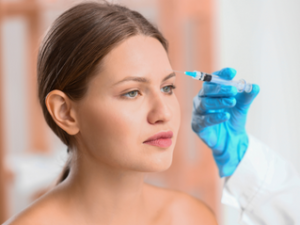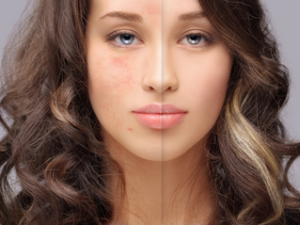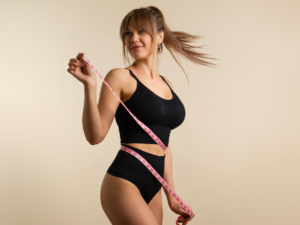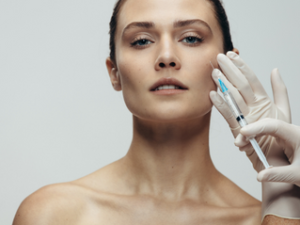The skin rejuvenation treatment Platelet-Rich Plasma (PRP) Therapy is often called a “Vampire Facial,” because it uses the patient’s own blood. Platelets found in plasma are removed from a sample of the patient’s blood, then injected into areas of the face to augment healing.
Sale!
How does the Vampire Plump (PRP) works?
- Using the microneedling device known as Rejuvapen, the Vampire Plump (PRP) allows our clinicians to rejuvenate skin without any invasive techniques. The Rejuvapen generates microchannels into key areas of the face, into which the clinician injects the platelet-rich plasma. You will have a detailed consultation with our clinician here at The One Beauty Bar at which you can discuss your medical history and your objectives and expectations for the Vampire Plump (PRP).
How long does Vampire Plump (PRP) takes?
- The Vampire Plump (PRP) treatment usually takes between 30 minutes and an hour, though this can vary according to how many treatment areas you need addressed.
Who should get Vampire Plump (PRP)?
Because Vampire Plump (PRP) therapy uses cells from your own body, most people are excellent candidates for the procedure to treat:
- Dark under-eye circles
- Crow’s feet
- Fine lines around the mouth
- Crepey skin in neck, chest, and eye areas
- Coarse skin texture
- Dull or gray skin tone
- Sun damage
- Acne scars
- Large pores
The Vampire Plump is not recommended for patients who have blood-related disorders, anemia or cancers of the blood or bone. Those taking blood thinners or non-steroidal anti-inflammatories (NSAIDs) should stop these medications for a few weeks before treatment and several days following it, based on their own physician’s directions.
How long will recovery after Vampire Plump (PRP) will take?
- One of the advantages of the Vampire Plump is that not much recovery time is necessary. Some redness and soreness, similar to a sunburn, may occur immediately following the treatment. Some patients may also experience bruising. The redness disappears on the day after treatment, but some patients will experience slight swelling and rough texture of the skin. By day 3, the swelling usually passes, but the rough texture may remain for up to a week.
The downtime required after this treatment is minimal, if any.






Reviews
There are no reviews yet.